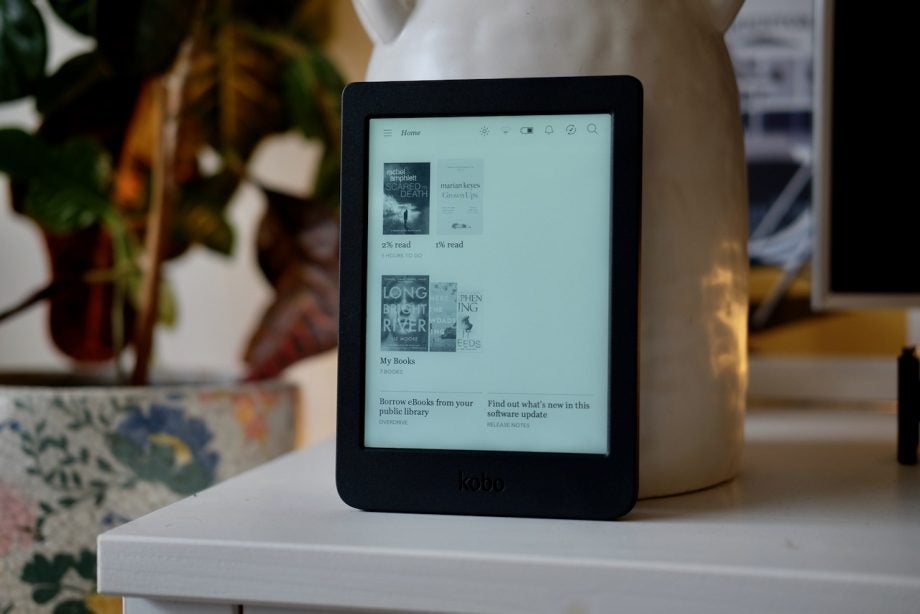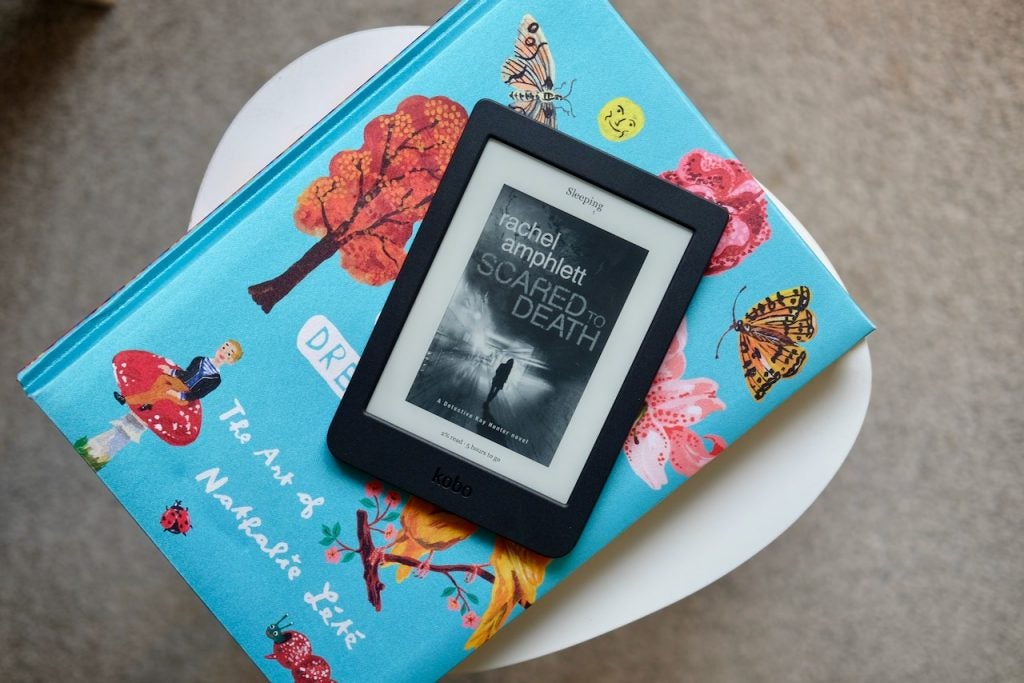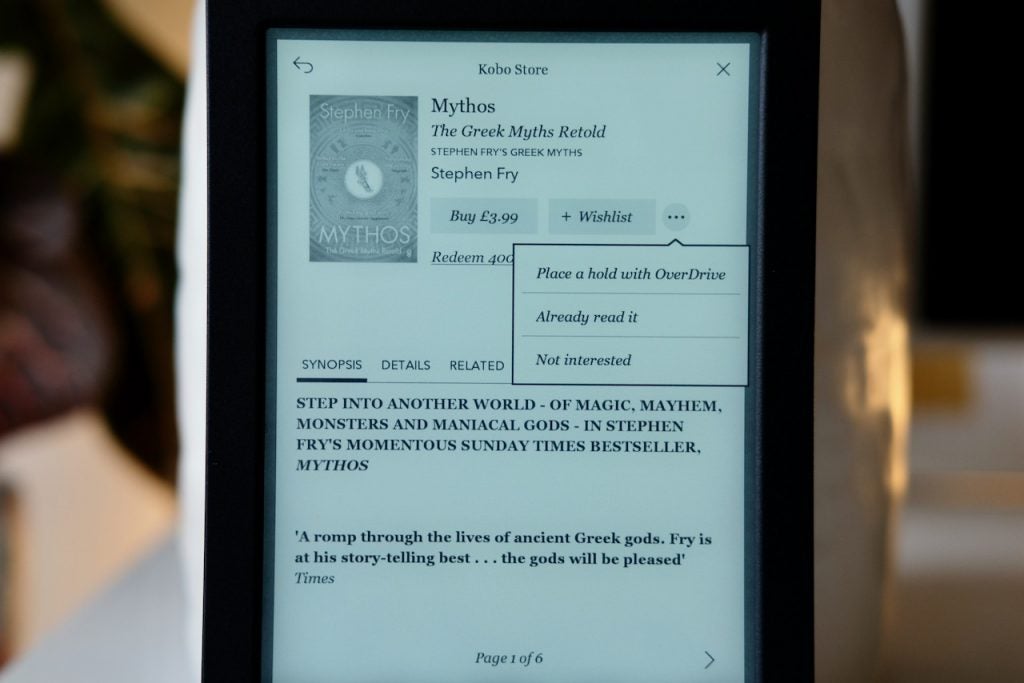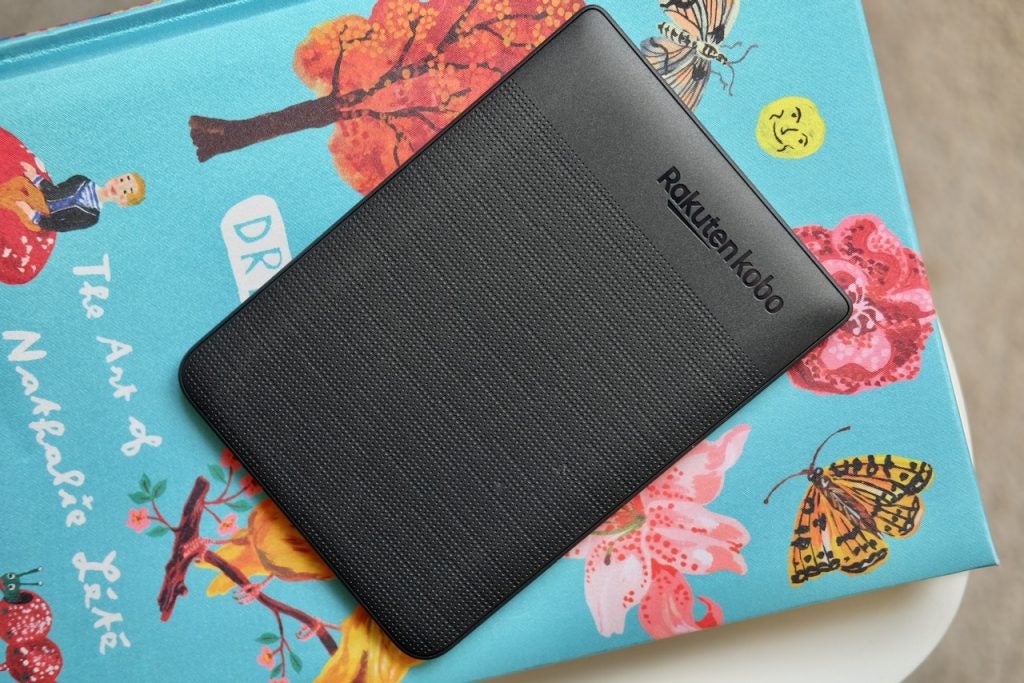Kobo Nia Review
A good Kindle alternative

Verdict
If you want an e-reader that isn’t an Amazon Kindle then you don’t have too much choice these days. There are few manufacturers left in the e-reader market, but Kobo isn’t ready to throw in the towel just yet – enter the Kobo Nia.
I’ve reviewed, and very much liked, Kobo’s e-readers before as the company’s tried to appeal to a more platform-agnostic reader who isn’t tied to one ecosystem. If you want to avoid Amazon entirely then the Nia might be the best way to do that.
This isn’t the most feature-packed e-reader though, but for £89 it offers a good reading experience with a couple of software features you won’t find on the Kindle Paperwhite.
Design – The Kobo Nia is light and small, ideal for summer travels
Like just about every e-reader we’ve ever reviewed, the Kobo Nia isn’t flashy. This is a utilitarian plastic rectangle with a slightly textured back, chunky bezel around the 6-inch screen and very little else. You can add a little more style by going for the Aqua or Lemon hues, but I was sent the more modest black version.
Related: Kobo Forma review
It’s roughly the same size and weight as the most basic Amazon Kindle and can easily slip into a bag or large coat pocket without adding any noticeable weight. This is a light product; one that can be held comfortably for hours of reading without it feeling heavy. It feels super durable too – another big win for an e-reader.
Nothing else particularly stands out about the design though and there isn’t that one unique feature that gives it a leg-up when facing down the Kindle range. It lacks any waterproofing (far from a given at this price, but would have been nice) and is one of the few devices I have seen this year that is still keeping the now ancient Micro USB port for charging. Come on guys, for nearly £90 I would expect USB-C here.

Features and Battery Life – Kobo’s software approach gives you various ways of reading
The biggest reason to plump for this instead of entering the world of Kindle is for the more open software. While Amazon makes getting stuff onto a Kindle that’s not directly from its own storefront something of a faff, it’s a whole lot easier here.
Of course Kobo has its own storefront where you can buy all the big-name bestsellers past and present, but it also has something called ‘Overdrive’ which lets you connect to your local library. With a library card, I set this up in a couple of minutes and was then able to download (aka borrow) titles directly to the reader. This is built directly into the storefront, rather than being siphoned off into a separate app, and works well if your local library has all the books you want.

The Nia also supports ePUB files natively without conversion and this opens up another way to get stuff onto the device to read. If you have a bunch of ePUB files then you can load them up here and read away.
Related: Kindle Oasis vs Kindle Paperwhite
You’ve also got integration with the excellent service Pocket. This lets you save articles from the web to read later, and with the Pocket software here your reading list will be available on the Nia. Again it works well and I like having the ability to read these articles on the Nia’s e-ink display.
If you are a Kindle user though, you likely won’t be swayed by what’s on offer. If you’re into Kindle Unlimited, the free books you get with Prime and even the huge selection of titles published directly to Kindle then you might feel the selection available here to be a little less appealing.
Battery life is typically hard to judge on devices like this as they’re designed to last for weeks, rather than days. There’s a 1000mAh battery inside and in the week I have been using it daily it has dropped 20%. That means you should be able to get through a fortnight holiday without worrying about charging it up.
Other features include 8GB of storage for around 6000 books and 12 fonts in various sizes.

Screen and Performance – The Nia can feel slow at times
The 6-inch Carta e-ink screen used here is perfectly functional. Its 212ppi resolution is sharper than the £69 Kindle and text is rendered clearly unless you get right up close.
There’s a light brightening up the display too so you can read at night without disturbing others. This ‘Comfort Light’ as Kobo calls it is evenly spread across the panel and there doesn’t seem to be any areas that get more love than others. It’s not the brightest light around, and you’ll have to manually adjust it, but I had no trouble reading in any environment I tried it in.
What I did notice throughout my time with the Nia was slight issues with the performance. This is common with cheaper e-readers and not a deal breaker, just be aware that navigating throughout the OS can be clunky. I often found the keyboard wouldn’t register my presses correctly and you have to be patient when navigating the book store. Unlike with Kindles, there’s no 4G option here so you’ll need a Wi-Fi connection to buy books.
Related: Best e-reader
Should you buy the Kobo Nia?
For the price, the Kobo Nia is a good Kindle alternative if you’d rather avoid Amazon. I really appreciate the Overdrive and Pocket integration, while the overall UI feels less like it’s trying to always sell you something and more like it just wants to be helpful.
The screen is better than the basic Kindle too, and the light evenly spread. There’s nothing here that is overly unique, but it certainly gets the job done.


